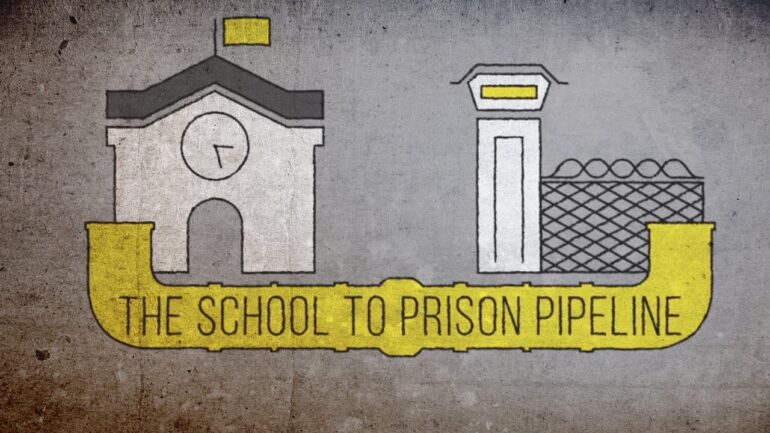The school-to-prison pipeline is the criminalization of children and youth, excessive and exclusionary school discipline policies, and juvenile justice involvement push children and youth into or deeper into the criminal justice system.
There are growing substantial gaps within the educational outcomes between Black and White students in the United States.
Researchers have studied the differences in the rates at which Black and white students are disciplined and found that Black students are more likely to be seen as problematic and more likely to be punished than white students are for the same offense. These punishments open up the school-to-prison pipeline.
For Black students, the school-to-prison pipe opens the second they begin preschool.
According to the Department of Education, Black students are disproportionately suspended from school when they’re as young as three years old. Despite fewer Black children being enrolled in preschool, they’re 3.6X more likely to be suspended from school than white children, and that disparity is worse for Black girls than boys.
In the U.S., Black and Latinx girls are unreasonably punished and criminalized. They are even physically assaulted in their schools by teachers, administrators, and school police officers.
In January 2019, four black and Latinx 12-year-old girls were strip-searched at East middle school in Binghamton, New York. After interacting with the girls in the hallway, the principal, Tim Simonds, found that they seemed to be on drugs. He suspected that they were hiding drugs under their clothes, so he took the girls to the school nurse’s office where, for over an hour, they were questioned and given sobriety tests. No one called their parents for consent. Instead, as instructed by the principal, the school nurse and the assistant principal, Michelle Raleigh, told the girls to remove their clothes while they watched. The one girl who refused to disrobe was suspended, and no drugs were found.
The suspensions of Black female students are often driven by teacher bias and insufficient mental health resources; they also occur when students break school rules that are inherently racially biased.
Columbia Law School’s Center for Intersectionality and Social Policy Studies found that Black girls are six times more likely to be suspended than their white counterparts.
The school-to-prison pipeline is a crucial issue facing many school districts, and implicit racial bias plays an extreme role. School discipline within schools can result in devastating impacts for children. A single suspension in the first year of high school doubles the dropout chance for that child. Children who are expelled are three times more likely to end up in the juvenile justice system.
“Incarcerated youth are 70% more likely to be in jail again by the age of 25 than youth who were not referred to juvenile detention.”
Once caught within the juvenile justice system, the psychological and economic consequences can have a lasting and burdensome impact on children while simultaneously decreasing their educational and financial opportunities and increasing the chances of reincarceration.
Many times, the school-to-prison pipeline begins with inadequate resources in public schools.
Overcrowded classrooms, a lack of qualified teachers, and insufficient funding for counselors, special education services, and even textbooks; trap students into failing educational environments. This failure to meet educational needs increases disengagement and dropouts, increasing the risk of later court involvement. Aggravatingly worse, schools unconsciously encourage dropouts in response to pressures from test-based accountability regimes, which create incentives to push out low-performing students to boost overall test scores.
In the United States, there are currently:
–1.7 million students in schools with police officers, but no counselors
–3 million students in schools with police officers, but no nurses
–14 million students are in schools with police officers, but not counselors, nurses, psychologists, or social workers.
We are failing our children, and our society is contributing to the increasingly devastating impacts of a failed educational system that can result in youth incarceration.


